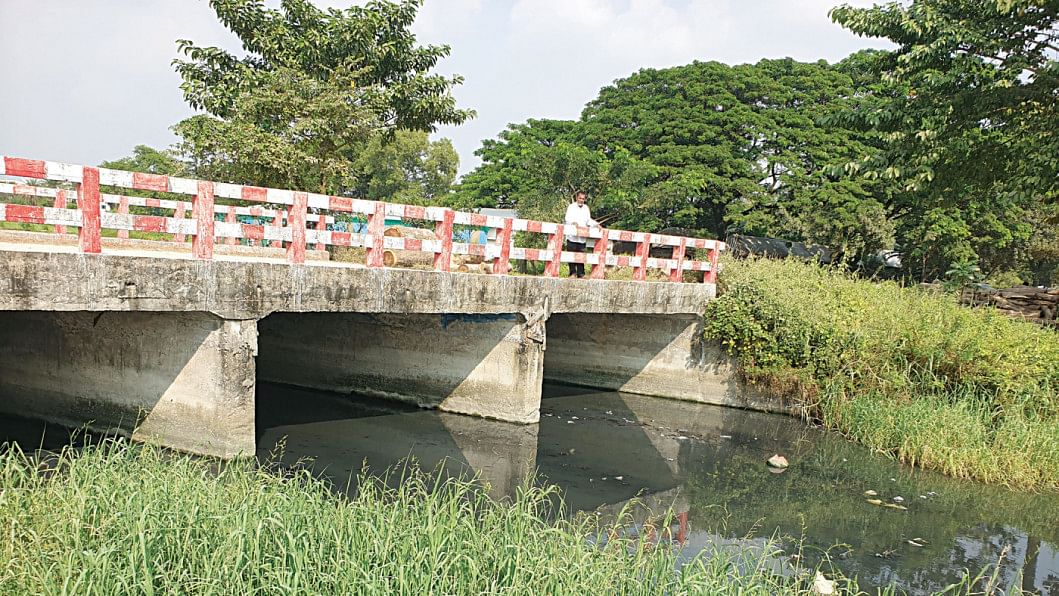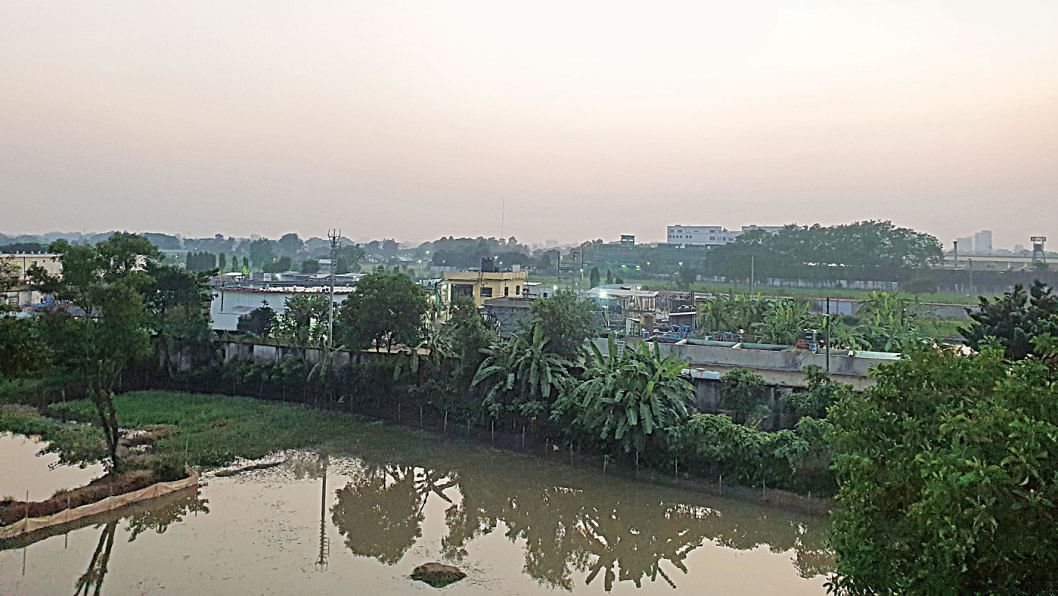In Cumilla, canals run black
Joinul Hossain, a 55-year-old farmer in Cumilla Sadar south upazila, followed in his father's footsteps to dedicate his entire life to cultivating their small piece of land and fishing in a canal near it.
A livelihood that was once modest enough for his family has now transformed into a bitter tale of hardship.
"The water of the canal that ran through our area used to be clear once and could be used for irrigation, household purposes, and fishing. Now the water in the canal has turned black due to the discharge of untreated industrial waste, and it has destroyed our crops while depleting fish population," Hossain said.
This grim reality is now an everyday experience for thousands of residents in the Sadar south upazila. Industrial pollution from Cumilla Export Processing Zone discharged to at least five canals in the area has devastated their livelihoods that revolve around agriculture.
Locals alleged that untreated wastewater from the factories has long been polluting the water of the canals.

The EPZ authorities, however, denied the allegation.
A lab test of water and liquid waste conducted in 2021 by the Department of Environment's Dhaka laboratory. According to the test results, the levels of BOD5 (biochemical oxygen demand over 5 days) and COD (chemical oxygen demand) did not meet the required standards.
In 2000, the Cumilla EPZ was established on 267.46 acres of land in the Old Airport area of the district town, comprising 243 industrial plots and currently employing 35,000 people, said officials concerned.
Although a Central Effluent Treatment Plant (CETP) was set up in the EPZ in 2014, locals complained that the discharge of untreated effluent in the canals continues, which has resulted in severe pollution of the water bodies.
A lab test of water and liquid waste conducted in 2021 by the Department of Environment's Dhaka laboratory corroborated these complaints.
According to the test results, the levels of BOD5 (biochemical oxygen demand over 5 days) and COD (chemical oxygen demand) did not meet the required standards.
COD provides a more comprehensive view of the overall oxygen demand in water, while BOD5 focuses specifically on the oxygen demand of microbes to break down biodegradable organic matter over a five-day incubation period, according to experts.
Decades of concern and complaints about untreated wastewater from Cumilla EPZ factories have seemingly been futile.
Some locals even alleged that the EPZ authorities often keep CETP operations suspended, worsening the situation.
EXTENT AND AFTERMATH OF POLLUTION
At present, two drains of Cumilla City Corporation flow through the boundaries of Cumilla EPZ's east and west edges. The CETP outlets are connected to the city corporation's drain on the east side, locally known as Airport canal, which flows through Razapara village, while a drain on the west side, which is not connected to the CETP, flows into Unaishar Khal (canal).
Both canals converge approximately 300 metres before Mostapur Bridge near Hirapur Uttar village, adjacent to the Central Medical College, before continuing as one stream into Kulai Khal, which leads to Bijoypur Khal and further flows into Gangujury Khal, eventually joining the Dakatia Khal.
During a recent visit to the area, it was seen that both Airport and Unaishar canals have lost their navigability and shrunk due to deposition of industrial sludge, while the water has turned black and emits a foul odour.
Industrial pollution has severely affected agriculture and fisheries throughout Cumilla to Dakatia basin, affecting the lives and livelihoods of some 70,000 residents of at least 50 villages in the upazila, said locals.
"Water of the canals has become extremely polluted due to the liquid waste from Cumilla EPZ. The emission of toxic gases is causing various health hazards, such as breathing difficulties and asthma," said Harunor Rashid, a resident of Dishabond village.
"We aim to preserve our ancestral agricultural practices and the local biodiversity. A couple of months ago, we held a meeting with the Cumilla EPZ's executive director, and they assured us of taking necessary measures to intensify functional capacity of CETP to stop the discharge of waste water into the canal," said Advocate Akhter Hossain of Gabtoli village.
However, there has not been any improvement in the situation yet, he added.
Naznin Kajol of Razapara village echoed the same.
Abdul Hai Bablu, vice chairman of the upazila parishad, said, "The CETP at the EPZ lacks the capacity to effectively treat these toxic pollutants."

EXPERTS' OPINIONS AND EPZ'S CLAIMS
Dr Sayadur Rahman, a professor of the department of chemistry at Comilla University, conducted another study on the state of water pollution in the area in January and February this year.
"After examining the soil, water, and sludge samples near Cumilla EPZ area, we have found the presence of heavy metals and pollutants," he said.
Dr Kamruzzaman Majumder, an environmentalist, said, "Industrial pollution is destroying farmlands and waterbodies. Crops and fisheries cultivated in soil and water, tainted by industrial pollution, directly contribute to health risks."
Contacted, Cumilla EPZ's executive director Abdullah Al Mahbub, however, claimed no toxic water or waste is being discharged from the EPZ into the canals.
The CETP remains in full swing around the clock, and it has enough capacity to remove toxic waste and chemicals from the water discharged from the factories, he added.

 For all latest news, follow The Daily Star's Google News channel.
For all latest news, follow The Daily Star's Google News channel. 



Comments